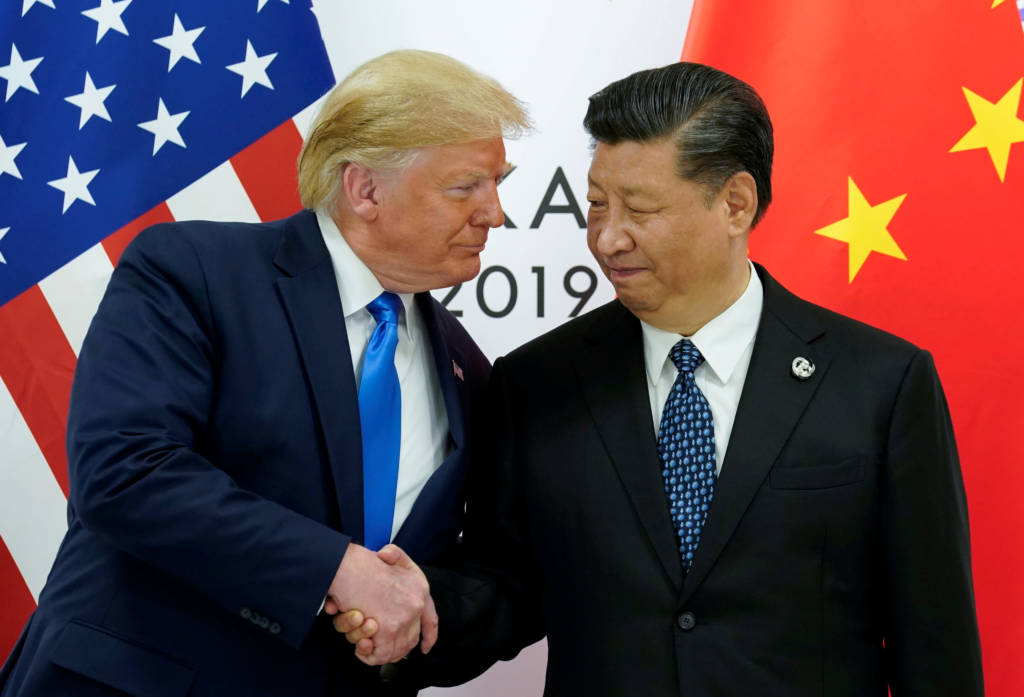China under Xi Jinping regime has a tough road ahead of itself as the countries around the world start cornering Beijing in the wake of the Wuhan virus pandemic. To pile on the misery of China, the American president Donald Trump has now threatened to axe the first phase of the US-China trade deal if Beijing misses import targets agreed before the pandemic hit amid growing tensions between the two superpowers.
“If they don’t buy, we’ll terminate the deal. Very simple,” said Trump at a ‘virtual town hall’ meeting at Lincoln Memorial in Washington where he minced no words in issuing a stern warning to Beijing.
Under the first phase of the US-China trade deal signed in January, China pledged to buy, over two years, at least US$200 billion more in American goods and services than it did in 2017, including about US$40 billion in agricultural goods.
I will be signing our very large and comprehensive Phase One Trade Deal with China on January 15. The ceremony will take place at the White House. High level representatives of China will be present. At a later date I will be going to Beijing where talks will begin on Phase Two!
— Donald J. Trump (@realDonaldTrump) December 31, 2019
The Phase 1 deal had ended tariffs of around $155 billion worth of Chinese imports that were set to take effect at the end of 2019 and halved tariffs to 7.5 percent on another $120 billion in goods. But it kept in place the 25 percent import taxes on $250 billion worth of Chinese products.
After Trump’s statement, US Treasury Secretary Steven Mnuchin further continued the war of words when he threatened China of “very significant consequences” for not honoring the trade deal.
With the Wuhan virus pandemic slowing the growth-rate of Beijing, experts have cast doubts on China’s ability to honor the commitment of procuring the aforementioned American goods. Rumour mills are rife that the vile Xi Jinping regime would try to invoke the force majeure clause—referring to an unforeseeable act of God, with regard to other planned purchases.
The US-China trade war started on 6 July 2018, when the US imposed a 25 percent tariff on US$34 billion of Chinese imports, the first in a series of tariffs imposed during 2018 and 2019.
Trump’s major election poll plank was reducing the trade deficit with China and soon after assuming the chair, he unleashed the tariff wars which ultimately turned into a full-blown Trade war between two of the largest economies of the planet.
At the peak of the trade war in 2019, Donald Trump administration had imposed tariffs on more than US$360 billion worth of Chinese goods, while China had retaliated with import duties of their own worth around US$110 billion on US products.
After being on the fence about attacking China for its role in the spread of the Wuhan virus, the US in the last couple of weeks has finally started coming around and has intensified the attacks on the communist country.
Secretary of State Mike Pompeo upped his ante in criticism of China when he said, “These are not the first times that we’ve had a world exposed to viruses as a result of failures in a Chinese lab, and so, while the intelligence community continues to do its work, they should continue to do that, and verify so that we are certain, I can tell you that there is a significant amount of evidence that this came from that laboratory in Wuhan,”
While the world economy, already battered by the global pandemic looks at the developments between China and the US with utmost caution—Trump is in no mood to relent, if his statements are any indication.
